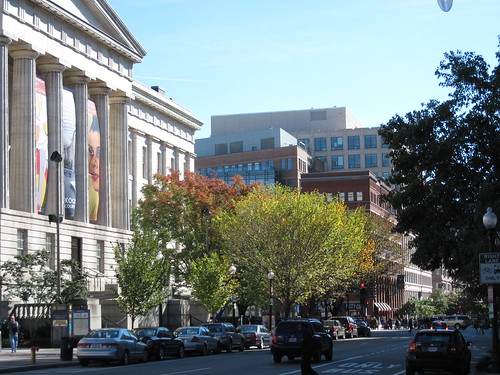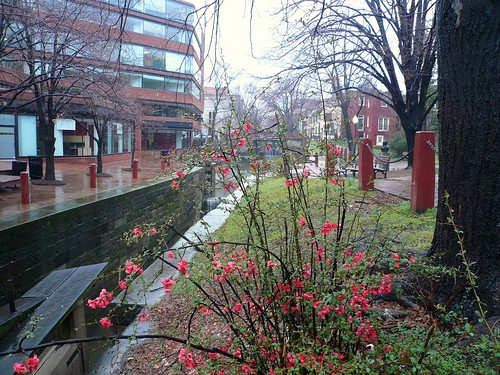DC issues ambitious plan to become "the healthiest, greenest, and most livable city in the United States"

Posted February 20, 2013 at 1:25PM
Earlier this week Washington, DC mayor Vincent Gray announced a bold sustainability vision that is as comprehensive and ambitious in its aspirations as any in the country and, frankly, worthy of comparison to those for other cities around the world. If successful, the 20-year program contemplated by Sustainable DC will bring the benefits of green living to traditionally underserved neighborhoods, cut obesity, substantially increase the presence of nature in the city, grow jobs, dramatically cut energy use and carbon emissions, and much more. If you’re not on board with these goals, then you just don’t care much about the urban environment.
In the US, the west coast cities of Seattle, Portland, and San Francisco have long led the way when it comes to environmental thinking and ambition. More recently, Chicago, New York and especially Philadelphia have produced seriously impressive plans and programs. I’ve even applauded terrific initiatives in El Paso and Rockford, Illinois. DC has been flying under the radar on these issues.
But, actually, Washington has been building a praiseworthy green portfolio, step by step, without a lot of fanfare, for the last decade. (I’ve reported on some examples, including zoning reform, a wildly popular bikesharing program, and tree planting.) 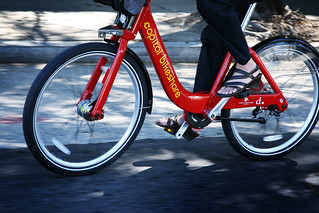 The new plan, which has been officially in the works for a year and a half, builds upon these efforts with something much bigger and certainly much more public. The fanfare helps, in my opinion: when you announce your intentions to the world, you put yourself in the position of having to deliver on them or produce good reasons why you didn’t. That’s a good thing.
The new plan, which has been officially in the works for a year and a half, builds upon these efforts with something much bigger and certainly much more public. The fanfare helps, in my opinion: when you announce your intentions to the world, you put yourself in the position of having to deliver on them or produce good reasons why you didn’t. That’s a good thing.
Here are the specifics that Sustainable DC aims for:
- Jobs and the economy: Triple the number of small businesses operating in the city, and create five times as many jobs providing green goods and services.
- Health and wellness: Cut the city’s obesity rate in half, and require new housing to meet health standards.
- Equity and diversity: Teach DC kids about sustainability and extend Sustainable DC events and initiatives to all city neighborhoods.
- Climate and environment: Reduce greenhouse gas emissions in half, and make the city more resilient to the impacts of climate change.
- Built environment: Require new construction and existing large buildings to generate as much energy as they consume; work to place amenities within a 20-minute walk of homes; accommodate 250,000 new residents. (DC held almost 200,000 more residents in 1950 than today; it was a “shrinking city” until the last decade.)
- Nature: Double the city’s inventory of wetlands, increase tree canopy, and place parks or natural space within a ten-minute walk of all residents.
- Transportation: Reduce commuting by car and increase commuting by transit, walking, and bicycling; eliminate days of unhealthy air quality, now primarily caused by driving.
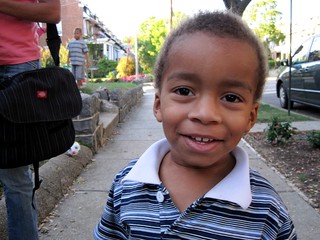 Water: Use 75 percent of the city’s landscape to capture rainwater for filtration or reuse, and make all city waterways compliant with clean water standards.
Water: Use 75 percent of the city’s landscape to capture rainwater for filtration or reuse, and make all city waterways compliant with clean water standards.- Energy: Cut citywide energy use by 50 percent, and increase the use of renewables.
- Food: Address food deserts by ensuring that at least 75 percent of the city’s residents are within a quarter mile of healthy, local food; devote 20 additional DC acres to food growing, and increase the city’s consumption of local food (within 100 miles) to at least 25 percent of the total.
- Waste: Reduce waste generation and eliminate the need to dispose of solid waste in landfills.
The first four are designated “priority challenges.”
These goals are supported by a detailed list of “actions” to be undertaken and city agencies designated to carry them out. It’s lengthy. Some of my favorites include updating zoning to allow more accessory dwelling units, rehabbing public housing “to be green, healthy, and capable of meeting net-zero energy standards,” using green alleys (as long as they are still functional for vehicle passage; alleys increase connectivity), and programming “crosswalks and traffic lights for improved safety and convenience of pedestrians and cyclists” (I’m kind of a nerd that way). Others that caught my eye include using green infrastructure along public rights of way, expanding neighborhood stores that carry healthy, local food, installing educational gardens at public schools, and developing a “healthy by design” program for new affordable housing projects (in walkable neighborhoods). Good stuff.
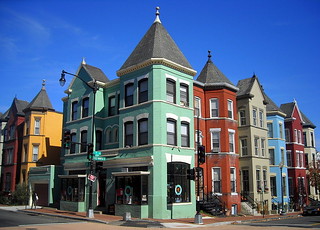 These are laid out in a summary document, and elaborated in the full, 127-page plan. Particularly noteworthy is the full plan’s section on governance, which includes – importantly – developing a system of performance measures and data collection to assess and document levels of achievement. The plan says the city is partnering with STAR Communities, a program in which NRDC has had a little involvement, “to pilot an evaluation system that measures outcomes against a set of national sustainability benchmarks. The metrics included in the STAR Community Rating System chart progress can be compared to more than 30 leading cities across the United States and Canada.” I hope the city also takes a look at the appropriately specific and excellent “Vital Signs” measures adopted in Rockland, Illinois. I haven’t seen a better set.
These are laid out in a summary document, and elaborated in the full, 127-page plan. Particularly noteworthy is the full plan’s section on governance, which includes – importantly – developing a system of performance measures and data collection to assess and document levels of achievement. The plan says the city is partnering with STAR Communities, a program in which NRDC has had a little involvement, “to pilot an evaluation system that measures outcomes against a set of national sustainability benchmarks. The metrics included in the STAR Community Rating System chart progress can be compared to more than 30 leading cities across the United States and Canada.” I hope the city also takes a look at the appropriately specific and excellent “Vital Signs” measures adopted in Rockland, Illinois. I haven’t seen a better set.
The city plans to undertake a systematic review of laws, regulations and policies to determine where there are conflicts with the plan and how to resolve them. And a number of items are designated as having implications for the 2013 city budget.
There are, of course, some flies in the ointment (love that metaphor). On top of the list is whether sufficient political support can be built for these initiatives. Mayor Gray’s administration has already been plagued by ethics scandals, and his popularity in recent polls has been low. Particularly daunting is that, in sometimes racially charged DC politics, sustainability is perceived by some as a “white” issue that gets in the way of the “black” issues of economic development and jobs.
Former “mayor-for-life” Marion Barry, now a city councilmember, has begun to stake out the argument. In an article written by Tim Craig and published in The Washington Post, Barry was quoted:
“Black folks are concerned about the environment, but they are also concerned about jobs. Gardens on roofs are fine, but if you are hungry, it’s not enough. You might have clean air to breathe, but it doesn’t matter if you are also broke.”
Perhaps now somewhat ironically, Mayor Gray’s predecessor, Adrian Fenty (like our president, the son of an African-American father and white mother), was largely voted out of office on the belief that he cared more about bike lanes, streetcars and school reform than about the city’s lower-income residents. The victor in that election, who defeated Fenty with strong African-American support? Current mayor Gray.
The truth is that DC does need jobs; it does need new industry; and sustainability is perfectly situated to supply both. Why not look to the future for an economic development strategy rather than the past? DC’s new plan would create many jobs in contracts to install green infrastructure and renewable energy sources, 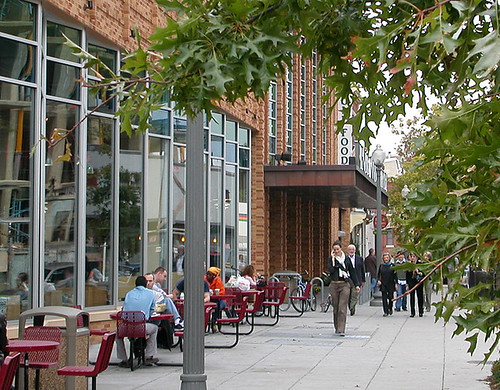 rehab housing, retrofit energy systems, create new parks and gardens, and more. This is a plan for a healthier economy as well as a healthier environment.
rehab housing, retrofit energy systems, create new parks and gardens, and more. This is a plan for a healthier economy as well as a healthier environment.
To frame the issue in another way, low-income and minority residents are every bit as deserving of clean air and water, healthy food, lower energy bills, access to nature, and a strong and convenient system of public transportation as anyone else. That is exactly what the plan prescribes, and it is cynical in the extreme to see sustainability as something that benefits only the privileged.
A second issue, which I recently raised in a different context, is that planning isn’t the same as doing. Gray’s opening statement in the new plan acknowledges that “not every proposal will work out just as envisioned,” and “some actions may fail.” That is undoubtedly true; translating a vision into accomplishment requires work, money, and cooperation. Even then, there will be missteps and unforeseen obstacles along the way. Implementation will be challenging. But to accomplish something, you must first know what your goals are and what your initial steps are. This plan does that, and does it well.
My final reservation – maybe more of an observation than a reservation – is that there is a real limit to what cities can do to help our environment. As I’ve written repeatedly, urban environmental problems tend to be regional, not jurisdictional. Central city residents are already far less polluting and consumptive, on average, than are those in the suburbs, especially outer suburbs; the latter gobble up more land, consume more energy, and drive more than their more urban counterparts.
Indeed, DC holds only 11 percent of the metro region’s population and even (far) less of its area, and by and large it’s already the most sustainable 11 percent. But regional governing mechanisms are almost nonexistent in the US, and the idea of getting outer suburbs, some of which may not even be incorporated, to curb sprawl and join the city in, say, strengthening public transportation, walkability, or green affordable housing is basically a cruel joke. (NRDC is working to turn that around, by the way; it's a daunting task, but we and our partners have had success in California and are targeting additional metros to strengthen meaningful regional planning.)
Meanwhile, though, Washington is the capital of the United States, an important and highly visible city. Leadership is critical, and there is no better place in the country for a showcase of effective green practices that also support economic development and social equity. Sustainable DC points the way, and I applaud the mayor and the many dedicated city employees, leaders, and citizens who crafted it. They have earned our support for bringing its vision to life.
Related posts:
- Greening America's capital cities (January 30, 2013)
- New online guide highlights the (sometimes hidden) beauty of Washington, DC (September 24, 2012)
- Measuring community sustainability: how do we know if we're on the right path? (June 21, 2012)
- DC zoning update seeks to legalize, encourage better neighborhoods (February 23, 2012)
- A spiffy green waterfront begins to take shape in DC (January 19, 2012)
- Philadelphia plan aims high for vitality, resilience (September 16, 2011)
- The rousing success of DC's Capital Bikeshare (April 26, 2011)
- The crumbling of the DC Metro (July 22, 2010)
- Outstanding walkability/livability presentation by DC planning staff (February 28, 2010)
- Reflecting national central-city trends, DC population rises while crime plummets (January 5, 2010)
- DC reduces its municipal fleet under innovative car-sharing scheme (April 29, 2009)
Move your cursor over the images for credit information.
